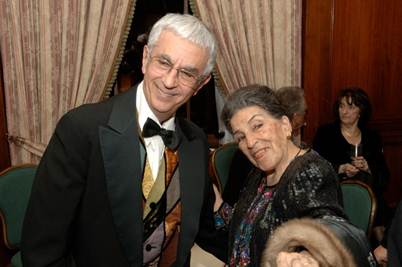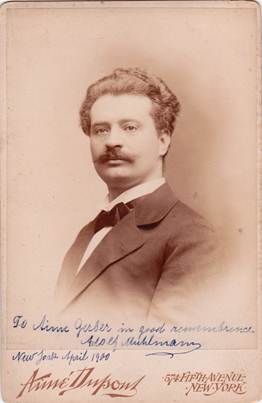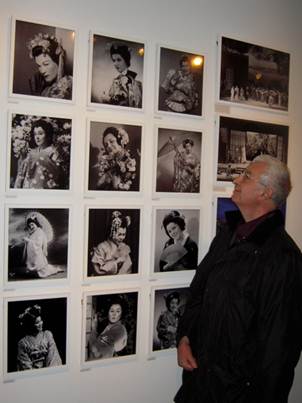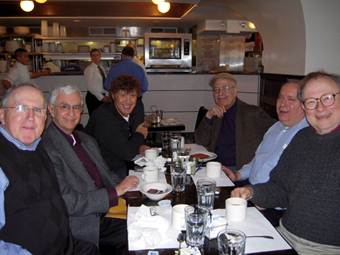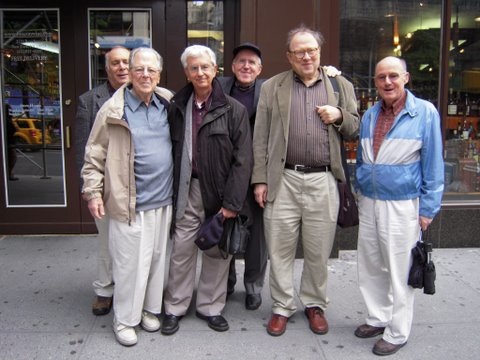BY ANDREW PATNER
Andy Karzas was a gentle man with a light voice that would shoot up when he spoke with excitement. The South Side native’s great passion was for opera singers from an earlier era, and the 78 rpm discs and wax cylinders that these performers made in the days of acoustic records.
But Mr. Karzas had great determination and an infectious enthusiasm that led him to become an internationally renowned radio broadcaster and opera and vocal expert. The second incarnation of his weekly WFMT radio program, which he had long ago titled From the Recording Horn as a salute to the period before electronic recordings became the norm in the late 1920s, celebrated its 35th anniversary in February. Just weeks later, Mr. Karzas, 77, died Monday at his Edgewater home from recently diagnosed stomach cancer.
Earlier in his career, Mr. Karzas had a long association with the Chicago entertainment business founded by his father and uncle, William and Andrew Karzas. The Karzas brothers, Greek immigrants who had their first success operating a nickelodeon and then building and owning the “deluxe” Woodlawn movie theatre, established the city’s leading luxury ballrooms, investing more than $3 million in 1920s dollars (the equivalent of some $38 million today) in the Trianon, at 62nd and Cottage Grove in 1922, and the Aragon, in Uptown at Lawrence and Broadway in 1926. The ballrooms were hugely popular, defining themselves in contrast to cheaper dance halls as strictly maintained, usher-monitored, atmospheric places where young women could safely attend unescorted.
The younger Andy Karzas had idolized many of the popular acts booked at his father’s venues, but while in high school at the now-defunct Harvard School for Boys in the South Side Kenwood neighborhood, he and some friends became smitten with opera. Graduating in 1951 at 17, Mr. Karzas headed east to Harvard University for college. When asked later what he had studied there, Mr. Karzas, who had a degree in history and literature, replied with his customary twinkle, “Gilbert and Sullivan [which he accompanied at the piano], singing in the Glee Club, and trips down to performances at the old Met in New York.”
In 1957, Mr. Karzas persuaded the original owner of WFMT, Bernard Jacobs, and the station’s then young program director Norman Pellegrini to let him try a “scratchy record program,” and From the Recording Horn began its first run, lasting for five years until Mr. Karzas’s father became ill and he had to devote himself to the Aragon. (William Karzas, who, with his brother had run his ballrooms as racially restricted, “no jazz” businesses with all-white bands, had closed the Trianon in 1952 as Woodlawn underwent racial change. It reopened under new management in 1954 catering to a Black clientele. William Karzas died in 1963.)
“I ran the Aragon as best I could in the period of rock ’n’ roll and the decline of social dancing,” Mr. Karzas would recall, “though some said I ran it into the ground.” He sold the business and property “for much less than it was worth and a fraction of what it was built for” in the late 1960s. Now a popular concert venue, the Aragon specializes in Latin music and rock events. The Trianon closed and was torn down in the mid-1960s.
Selling the business allowed Mr. Karzas to focus on his great love of opera and his equal commitment to sharing his knowledge and collection with the listening public, especially with listeners new to the art form or to the great singers of the past.
Taking jobs in advertising sales first at the Chicago Sun-Times, then at Chicago magazine when it was owned by WFMT and then at WFMT itself, Mr. Karzas essentially gave his program to the radio station for change beginning again in 1976. “I always thought that if I asked for too much money, they’d pull the plug,” he said. He displayed strengths as a salesman, especially with liquor and restaurant accounts, that made him indispensable to the company until his retirement from his “day job” several years ago.
The program took off and eventually moved from a late weeknight spot to coveted radio “real estate” on Saturday afternoons at 4 p.m. following the Metropolitan Opera broadcasts. Via syndication, a period of satellite “superstation” broadcasting, and then Internet streaming, listenership expanded well beyond Chicago. The special compilation recordings that Mr. Karzas would assemble from his vast collection as premiums for WFMT’s on-air membership drives achieved tremendous popularity. For many years Mr. Karzas also lectured and wrote recording guides for Lyric Opera of Chicago and led international and New York opera tours.
On April 4, WFMT’s general manager Steve Robinson and program director Peter Whorf created a 12-hour “Andy Karzas Day” featuring rebroadcasts of profile programs of favorite singers of Mr. Karzas, including tenors Giuseppe di Stefano and Joseph Schmidt and his “personal diva,” soprano Licia Albanese, whom Andy and his late life partner of 42 years, actor Jim Deuter, came to know as a close friend.
That broadcast and news of Mr. Karzas’s death generated hundreds of email, voicemail, and Facebook testimonials from lifelong friends as well as listeners who had never met Mr. Karzas but, from his programs, considered him a teacher and friend. WFMT named the studio where From the Recording Horn was produced in his honor.
In recent years, Mr. Karzas suffered numerous setbacks, including periodic health problems, a fire that destroyed the vintage Diversey Parkway house he had shared with Deuter and much of his collection of photographs and autographs of opera stars, and Deuter’s physical incapacity and then death from heart failure at 71 last year. But he rarely seemed down and remained devoted to preparing his weekly broadcast.
Chicago actor and opera expert Lawrence McCauley knew Mr. Karzas from their earliest days of being enthralled with the art form, including the first seasons of what became Lyric Opera. Echoing words of many friends and colleagues, McCauley said, “He was the best of us. The most knowledgeable, the kindest, the most generous. Who touches people like that and gives them such a weekly gift that stays with them for the rest of their lives? He first heard Licia on radio broadcasts in 1951, and here he was, still introducing her to people via the radio 60 years later.”
WFMT’s Robinson said that the station would, at Mr. Karzas’s request, play at least one recording by Albanese every month, “forever, as a tribute to this unique man.” WFMT also will broadcast a special two-hour memorial edition of From the Recording Horn at 4 p.m. this Saturday.
Survivors include a sister, Lois Kempton; nieces Kathy Kempton, Eleni Benedikt, and Diane Haskins, and members of Deuter’s family. No services are planned.
